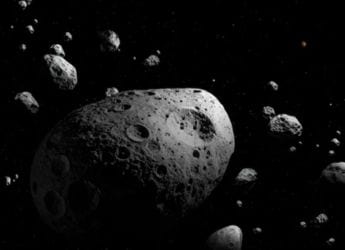- Home
- Science
- Science News
- Draconid Meteor Shower 2024: How to Watch Dozens of Shooting Stars in Night Sky
Draconid Meteor Shower 2024: How to Watch Dozens of Shooting Stars in Night Sky
The Draconid Meteor Shower peaks on October 8 and 9, offering a chance to see dozens of meteors after sunset.

Photo Credit: Unsplash/ Lamna The Shark
The Draconid Meteor Shower will peak on October 8 and 9.
The Draconid Meteor Shower, known for its connection to the constellation Draco, is set to peak on October 8th and 9th this year. This annual meteor shower provides a rare opportunity for skywatchers to witness meteors during the evening hours. The constellation Draco lies in the northern sky, making the shower visible throughout the night. Unlike many other meteor showers, which are best viewed in the early morning, the Draconids can be seen just after dark, giving casual stargazers an easier viewing window.
When and Where to Watch the Draconid Meteor Shower
The Draconid meteors will be visible from the northern hemisphere, where Draco, the dragon-shaped constellation, resides. On October 8 and 9, the meteors will appear to radiate from Draco's ‘tail,' which will be positioned above the Big Dipper in the north-northwest sky. According to NASA, the Draconids occur annually as Earth passes through debris left by Comet 21P/Giacobini-Zinner. This particular comet crosses Earth's orbit once every 6.5 years, leaving behind a trail of particles that Earth encounters during this time.
Draconids are known for their variability, and the American Meteor Society predicts around 10 meteors per hour during the peak, though this number can fluctuate. The best time to watch will be after sunset on October 8, with minimal interference from the moon as it will set a few hours after dusk.
Draconids: Origin and What to Expect
Named after Comet 21P/Giacobini-Zinner, the Draconids typically have a lower meteor count compared to other showers, but their evening visibility makes them unique. The peak falls under favourable conditions this year, with little moonlight to wash out the meteors. While the meteor count may not be high, the viewing experience is convenient and perfect for those who wish to witness shooting stars without staying up until the early morning.
Catch the latest from the Consumer Electronics Show on Gadgets 360, at our CES 2026 hub.
- Samsung Galaxy Unpacked 2025
- ChatGPT
- Redmi Note 14 Pro+
- iPhone 16
- Apple Vision Pro
- Oneplus 12
- OnePlus Nord CE 3 Lite 5G
- iPhone 13
- Xiaomi 14 Pro
- Oppo Find N3
- Tecno Spark Go (2023)
- Realme V30
- Best Phones Under 25000
- Samsung Galaxy S24 Series
- Cryptocurrency
- iQoo 12
- Samsung Galaxy S24 Ultra
- Giottus
- Samsung Galaxy Z Flip 5
- Apple 'Scary Fast'
- Housefull 5
- GoPro Hero 12 Black Review
- Invincible Season 2
- JioGlass
- HD Ready TV
- Laptop Under 50000
- Smartwatch Under 10000
- Latest Mobile Phones
- Compare Phones
- OnePlus Turbo 6V
- OnePlus Turbo 6
- Itel Zeno 20 Max
- OPPO Reno 15 Pro Mini 5G
- Poco M8 Pro 5G
- Motorola Signature
- Vivo Y50e 5G
- Vivo Y50s 5G
- Lenovo Yoga Slim 7x (2025)
- Lenovo Yoga Slim 7a
- Realme Pad 3
- OPPO Pad Air 5
- Xiaomi Watch 5
- Huawei Watch 10th Anniversary Edition
- Acerpure Nitro Z Series 100-inch QLED TV
- Samsung 43 Inch LED Ultra HD (4K) Smart TV (UA43UE81AFULXL)
- Asus ROG Ally
- Nintendo Switch Lite
- Haier 1.6 Ton 5 Star Inverter Split AC (HSU19G-MZAID5BN-INV)
- Haier 1.6 Ton 5 Star Inverter Split AC (HSU19G-MZAIM5BN-INV)












